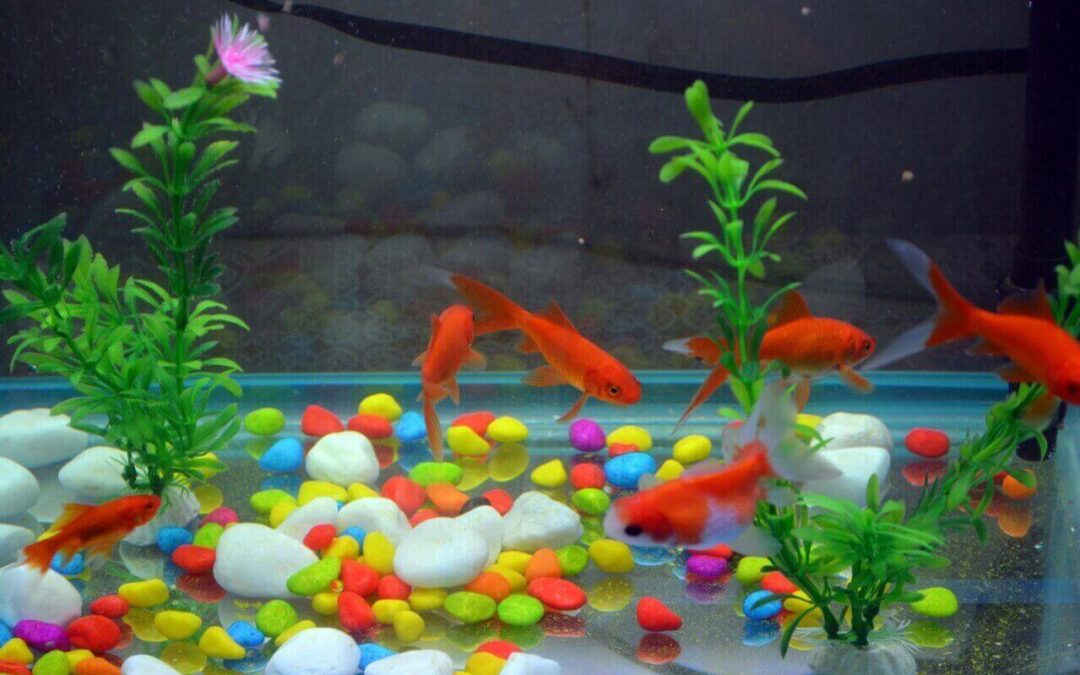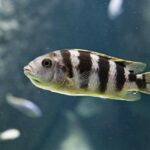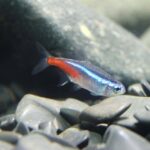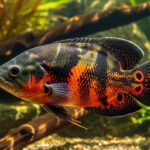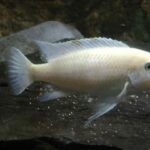Goldfish are one of the most popular fish in the aquarium world—for good reason. Their playful nature, wide variety of shapes and colors, and generally peaceful demeanor make them a joy to keep. But if you’ve ever looked at your goldfish swimming solo and wondered, “Wouldn’t it be nice if they had some company?”—you’re not alone.
The good news? Goldfish can live with other fish. The not-so-good news? It’s not as simple as just adding a few tankmates and hoping for the best.
Unlike tropical fish, goldfish prefer cooler water. They’re also big eaters, produce a ton of waste, and can be unintentionally rough with smaller, slower fish. So, while they’re peaceful, they aren’t always the easiest to pair up. In this guide, we’ll dive into which fish make good goldfish tank mates, which ones to avoid, and what you need to consider before creating a mixed-species tank.
Why Compatibility Matters When Keeping Goldfish with Other Fish
Goldfish are a bit unique compared to many other aquarium fish. They’re not tropical fish, and they don’t behave like them either. Let’s break down what makes goldfish different and why it’s important to be selective when choosing their tank mates:
Cool Water Requirements
Goldfish prefer water in the 65°F to 75°F (18°C–24°C) range. That rules out many tropical species right away, as they need warmer water to survive.
Messy Eaters
They eat a lot, dig through the gravel looking for food, and produce loads of waste. This means their tanks need strong filtration—and any tankmates need to tolerate the same messy environment.
Peaceful… But a Bit Pushy
Goldfish are usually friendly, but they can become curious (or nippy) when other fish are slower or smaller. It’s not aggression—it’s just goldfish being, well, goldfish.
Different Speeds
Some goldfish swim like ballerinas (e.g., Orandas), while others dart around like Olympic athletes (e.g., Comets). Mixing the two can cause stress, especially during feeding time.
With that in mind, let’s take a look at some of the best fish that can live with goldfish—and thrive.
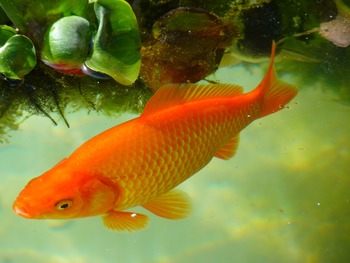
Compatible Fish Species That Can Live With Goldfish
Let’s explore the top tank mates that actually work well in a goldfish tank. Each one on this list has something in common: they can live in cooler temperatures, are peaceful, and can hold their own around a curious goldfish.
Other Goldfish
Best choice: Other goldfish, especially those of similar size and swimming speed.
Goldfish are social animals and often do well in the company of their own kind. However, it’s crucial to group compatible types together:
- Fancy goldfish (like Fantails, Orandas, and Ryukins) are slower and more delicate.
- Single-tail goldfish (like Comets and Shubunkins) are faster and more active.
Tip: Avoid mixing fancy and single-tail goldfish. The faster types will often outcompete the slower ones for food and space.
White Cloud Mountain Minnows
These small, peaceful fish are well-suited to the same cool water temperatures goldfish love. Their active behavior and peaceful nature make them great companions in larger tanks.
- Temperature Range: 60°F–72°F (16°C–22°C)
- Size: Around 1.5 inches
- Temperament: Peaceful and active
Note: Only keep them with smaller fancy goldfish, as large goldfish might mistake them for food.
Rosy Barbs
Rosy barbs are colorful, energetic, and enjoy the same cool conditions as goldfish. They’re one of the best barbs for community tanks due to their peaceful disposition.
- Temperature Range: 64°F–74°F (18°C–23°C)
- Size: 4–6 inches
- Temperament: Generally peaceful
Caution: Keep them in groups of at least five to reduce nipping behavior.
Bristlenose Plecos
Bristlenose plecos are bottom-dwelling algae eaters that help clean the tank. They tolerate cool water and are generally peaceful tankmates for goldfish.
- Temperature Range: 60°F–80°F (16°C–27°C)
- Size: 4–5 inches
- Temperament: Docile and helpful
Avoid common plecos, which grow too large for most home aquariums and may become aggressive.
Hillstream Loaches
These unique, algae-eating fish look like miniature stingrays and enjoy fast-flowing, oxygen-rich cool water—just like goldfish. They’re great tank cleaners and stay out of the goldfish’s way.
- Temperature Range: 65°F–75°F (18°C–24°C)
- Size: Around 3 inches
- Temperament: Peaceful and shy
Tip: Provide smooth rocks or glass surfaces for them to graze on.
Banded Corydoras
While most corydoras species prefer warmer water, the Banded Corydoras (also called Corydoras metae) can tolerate cooler temperatures and make peaceful bottom-dwelling companions.
- Temperature Range: 68°F–74°F (20°C–23°C)
- Size: 2.5 inches
- Temperament: Very peaceful and social
Important: Always keep corydoras in groups of 5 or more to avoid stress.
Giant Danios
Giant danios are fast-swimming, schooling fish that enjoy cool water. They add movement to the upper levels of the tank and generally get along with goldfish.
- Temperature Range: 64°F–75°F (18°C–24°C)
- Size: 4 inches
- Temperament: Active and peaceful
Note: Keep at least 6 to form a proper school and prevent bullying.
Platies
Platies are colorful, live-bearing fish that are peaceful and relatively hardy. While they’re typically kept in warmer water, many platies can adapt to cooler goldfish-friendly temperatures.
- Temperature Range: 68°F–74°F (20°C–23°C)
- Size: 2.5 inches
- Temperament: Calm and peaceful
Caution: Monitor their health if kept at the lower end of their temperature range.
Important Considerations When Choosing Tankmates
Even if the fish are technically compatible, it’s crucial to fine-tune the tank environment to keep everyone healthy and stress-free.
Size and Swimming Speed
Goldfish can accidentally eat smaller fish—especially if they fit in their mouths. Always choose tankmates that are similar in size or too large to be swallowed.
Also, avoid mixing fast swimmers (like Comets) with slow ones (like Bubble Eyes or Celestials), as the slower ones might struggle to get food.
Water Temperature
Goldfish thrive in water between 65°F and 75°F. Many tropical fish require warmer temperatures, which would be uncomfortable or harmful for goldfish.
Stick to fish that naturally tolerate cooler water or can at least adapt without stress.
Feeding Competition
Goldfish can be greedy eaters and may consume food before slower tankmates get a chance. During feeding, watch to make sure all fish are eating enough.
Tip: Use sinking pellets or feed on opposite sides of the tank to distribute food more fairly.
Space and Tank Size
Goldfish need a lot of room. A single fancy goldfish requires at least 20 gallons, with 10 more gallons per additional goldfish. Add other fish, and you’ll need even more space.
Overcrowding leads to stress, aggression, and poor water quality.
Water Filtration
Because goldfish produce a lot of waste, a strong filtration system is essential—especially in a community tank. Consider using a filter rated for double the tank size.
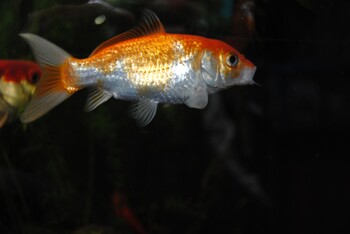
Fish to Avoid Keeping With Goldfish
Some species may seem like good companions at first glance but are best avoided for one reason or another:
| Fish | Why They’re a Bad Match |
| Betta Fish | Need warmer water, often territorial |
| Neon Tetras | Too small, may get eaten |
| Guppies | Risk of being fin-nipped or eaten |
| Angelfish | Warmer water needs and aggressive tendencies |
| Cichlids | Often aggressive, require different water conditions |
| Common Plecos | Grow too large and can become aggressive |
Quick Compatibility Chart
| Fish Name | Size | Temp Range | Peaceful? | Notes |
| Goldfish (same type) | Varies | 65–75°F | Yes | Best when matched by type and size |
| White Cloud Minnows | 1.5” | 60–72°F | Yes | Small but compatible with fancy types |
| Rosy Barbs | 4–6” | 64–74°F | Mostly | Keep in groups to prevent nipping |
| Bristlenose Plecos | 4–5” | 60–80°F | Yes | Helps with algae control |
| Hillstream Loaches | 3” | 65–75°F | Yes | Unique look, algae eater |
| Banded Corydoras | 2.5” | 68–74°F | Yes | Keep in small groups |
| Giant Danios | 4” | 64–75°F | Yes | Active and best in groups |
| Platies | 2.5” | 68–74°F | Yes | May tolerate cooler temps with care |
FAQs About Goldfish Tankmates
Q: Can goldfish live with tropical fish?
A: Most tropical fish require warmer water than goldfish prefer. While some adaptable tropical fish (like platies or rosy barbs) can tolerate cooler temperatures, many cannot.
Q: How many fish can I keep with my goldfish?
A: It depends on your tank size. Start with at least 20 gallons for the first goldfish and add 10 gallons for each additional fish. Ensure proper filtration and space.
Q: Will goldfish eat other fish?
A: If the other fish are small enough to fit in a goldfish’s mouth, yes. Always choose tankmates of similar size or larger.
Q: Can fancy goldfish live with fast goldfish like comets?
A: Not ideal. Fast swimmers often outcompete fancy goldfish for food and space, causing stress or malnutrition in the slower ones.
Q: What’s the best algae eater for a goldfish tank?
A: Bristlenose plecos and hillstream loaches are both excellent options that tolerate cooler temperatures.
Q: What is the best tankmate for a single fancy goldfish?
A: Another fancy goldfish of similar size is ideal. White Cloud Minnows or Bristlenose Plecos are also excellent choices.
Q: Can goldfish live with snails or shrimp?
A: Goldfish often eat small shrimp and may nip at snails. Larger snails like Mystery Snails may work, but keep an eye on interactions.
Q: Do goldfish get lonely?
A: While not as social as schooling fish, goldfish do enjoy the presence of tank mates—especially other goldfish.
Q: How do I introduce new fish to my goldfish tank?
A: Quarantine new fish for 2–3 weeks, monitor behavior closely, and introduce during feeding to minimize stress.
Q: Can goldfish live with koi?
A: In large outdoor ponds, yes. But koi get much larger and need more space. In home aquariums, it’s not a good match.
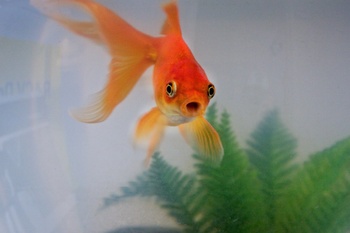
Final Thoughts
Goldfish can absolutely share their tank with other fish—but only if you choose the right tankmates. The best companions are peaceful, tolerant of cooler water, and large enough not to be seen as food. Whether you’re adding a few White Cloud Minnows, a Bristlenose Pleco, or some Rosy Barbs, the key is balance. Always monitor behavior, maintain excellent water quality, and adjust as needed.
With thoughtful planning, your goldfish tank can be a peaceful and vibrant community for years to come.

